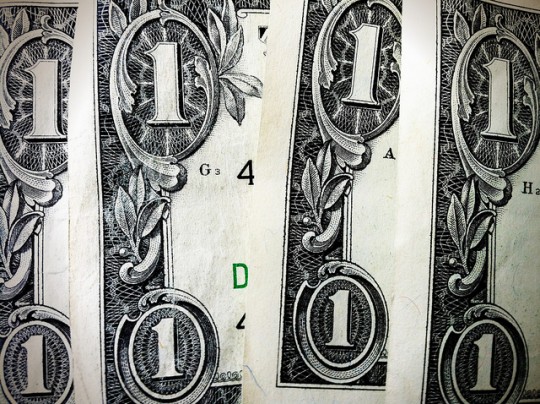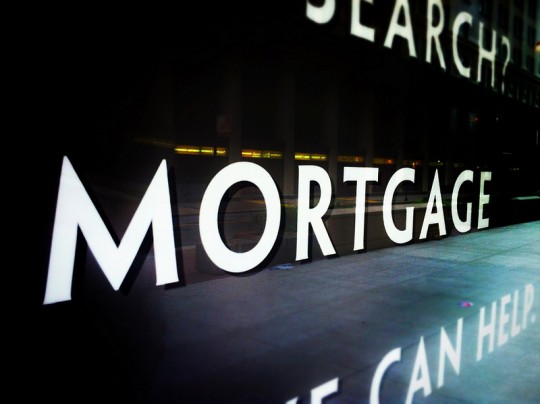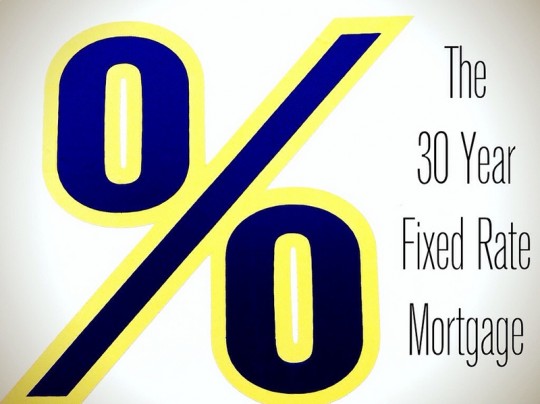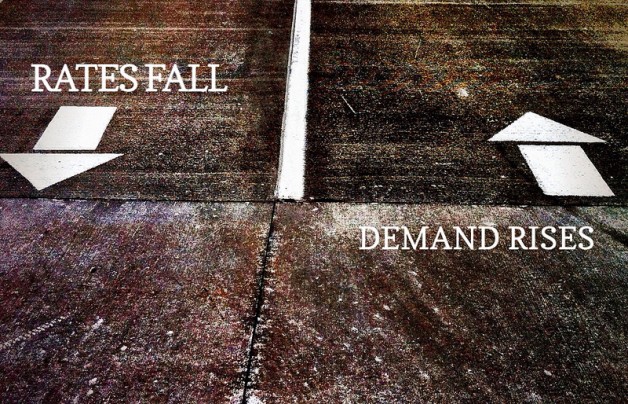According to the Mortgage Bankers Association’s Weekly Applications Survey, the average contract interest rate for 30-year fixed-rate mortgages with conforming loan balances fell to its lowest level since November 2013 last week. Interest rates were down for FHA-backed loans and 15-year fixed-rate mortgages as well, while rates for jumbo loans remained unchanged from the week before. Falling mortgage rates led to an increase in refinance activity, with the Refinance Index increasing 7 percent from the previous week. The surge in refinance demand also brought the refinance share of total mortgage activity back up to 50 percent. The seasonally adjusted Purchase Index, on the other hand, fell 1 percent from the week before. The drop in mortgage rates marks the third consecutive week rates have fallen. The MBA’s survey has been conducted weekly since 1990 and covers 75 percent of all retail residential mortgage applications. More here.
Tag Archive for fixed rate mortgages
Average Mortgage Rate Falls, Demand Surges
According to the Mortgage Bankers Association’s Weekly Applications Survey, the average contract interest rate for 30-year fixed-rate mortgages fell last week, reaching the lowest point since June. The drop in rates was the second in as many weeks and kicked off a surge in demand for home loans. The Market Composite Index, which measures both purchase and refinance volume, was up 6.4 percent from one week earlier, due to a 9 percent increase in refinance demand and a 2 percent spike in purchase loan activity. The survey, which covers 75 percent of all U.S. residential mortgage applications, has been conducted weekly since 1990. More here.
Refinancing Activity Continues To Rise
According to the Mortgage Bankers Association’s Weekly Applications Survey, refinancing demand increased again last week, rising 3 percent after a 2.5 percent gain in the previous week’s survey. But despite the improvement, total mortgage application demand was nearly flat, registering just a 0.3 percent increase due to a decline in purchase loan activity. That decline was caused, in part, by the effects of the federal government’s shutdown. Mike Fratantoni, MBA’s vice president of research and economics, said the shutdown had a notable impact on the mortgage market, as applications for government programs dropped more than 7 percent to their lowest level since December 2007. The survey also found the average contract interest rate for 30-year fixed-rate mortgages up slightly from the week before. The MBA’s weekly survey covers more than 75 percent of all U.S. retail residential mortgage applications. More here.
Mortgage Rates Fall To Lowest Level Since June
According to the Mortgage Bankers Association’s Weekly Applications Survey, the average contract interest rate for 30-year fixed-rate mortgages fell again last week. Mortgage rates are now at their lowest point since June. Despite the drop in rates, however, demand for mortgage loans overall was down 0.4 percent, due to a 6 percent slide in the seasonally adjusted Purchase Index. The Refinance Index, on the other hand, saw a 3 percent uptick due to consecutive weeks of declining mortgage rates. The increase brought the refinance share of total mortgage activity up to 63 percent. According to the report, all fixed-rate mortgages fell to three-month lows last week. More here.
The Continuing Popularity Of The 30-Year Fixed Rate Mortgage
The 30-year fixed-rate home loan has been the most popular choice for borrowers for many years. In fact, when 15-year rates fell to an historic 2.5 percent last year, the 30-year term still accounted for 85 percent of all home-purchase loans. During the first half of this year, nearly 90 percent of homebuyers chose it. According to Freddie Mac’s chief economist, Frank Nothaft, there are three reasons for the continued popularity of 30-year fixed-rate mortgages. First among those is the fact that it is more affordable. Because the term is longer, the monthly payment is lower than it would be on a shorter-term mortgage. They are also more stable because the rate is locked in and not subject to the ups and downs of the market. Finally, Nothaft says flexibility is a feature of 30-year loans that makes them popular with buyers and borrowers. In short, 30-year loans continue to be the most popular mortgage product for American homebuyers because they are the most affordable and manageable, helping middle-class and first-time buyers enjoy the benefits of homeownership. More here.
Mortgage Demand Increases As Rates Fall
According to the Mortgage Bankers Association’s Weekly Applications Survey, demand for mortgage loans was up 5.5 percent last week from the week before. The increase included a 7 percent spike in demand for purchase loans and a 5 percent gain in the number of people requesting applications to refinance their home. The Purchase Index was at its highest level since July. The survey also found the average contract interest rate for 30-year fixed-rate mortgages fell again last week for all loan types. But despite the drop in rates, the refinance share of total mortgage activity was unchanged from the previous week at 61 percent. The survey, which the MBA has been conducting weekly since 1990, covers 75 percent of all U.S. retail residential mortgage applications. More here.
Average Mortgage Rate Dips, Refinance Demand Surges
A drop in the average contract interest rate for 30-year fixed-rate mortgages caused an 11.2 percent spike in demand for mortgage applications last week, according to the Mortgage Bankers Association’s Weekly Mortgage Applications Survey. The increase was due, in part, to an 18 percent surge in the Refinance Index and a 3 percent jump in the seasonally adjusted Purchase Index. The previous week saw a 13.5 percent drop in overall demand for mortgage applications, despite an adjustment for the Labor Day holiday. Last week’s recovery brought demand back to nearly the same level as before the holiday. More here and here.







